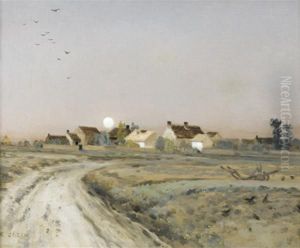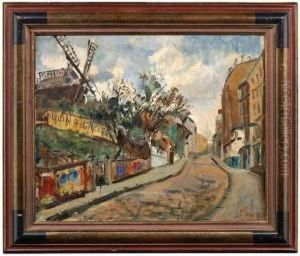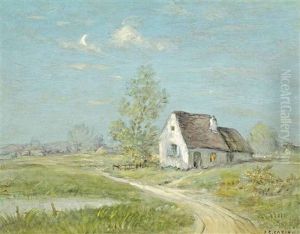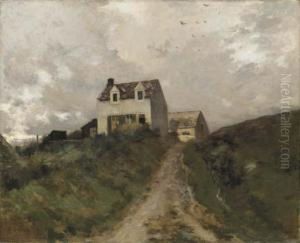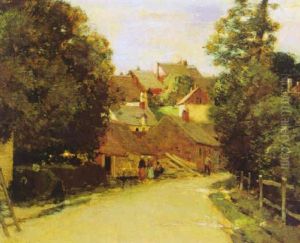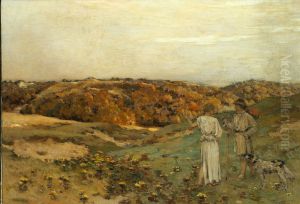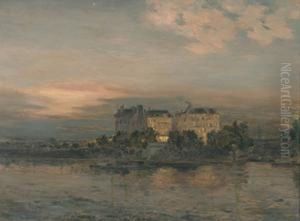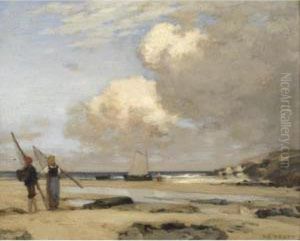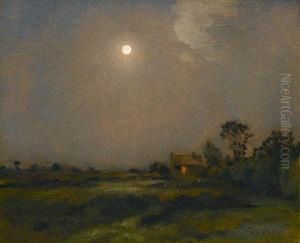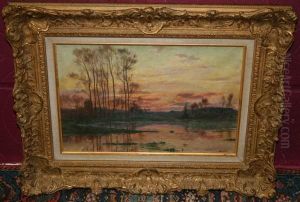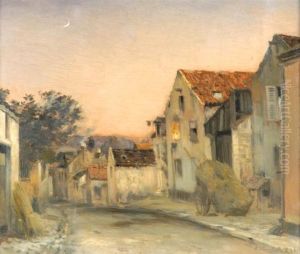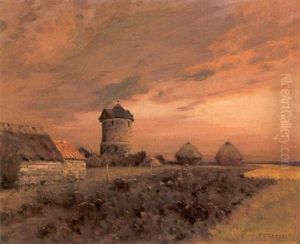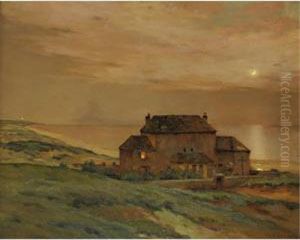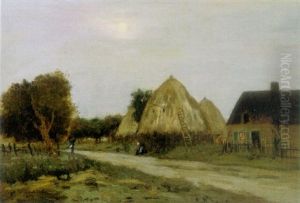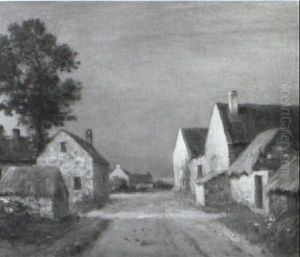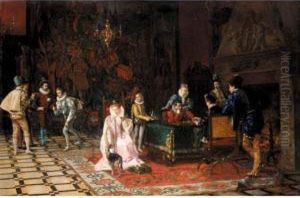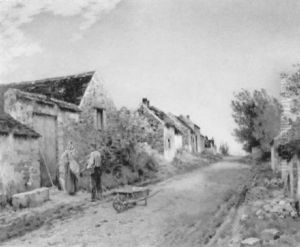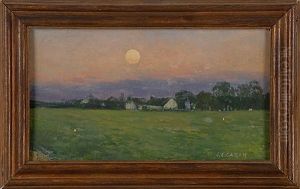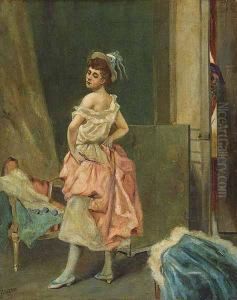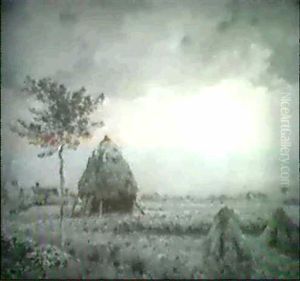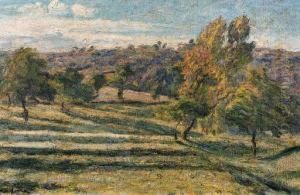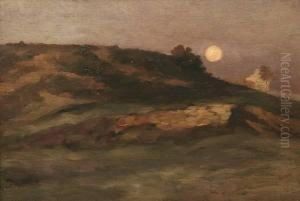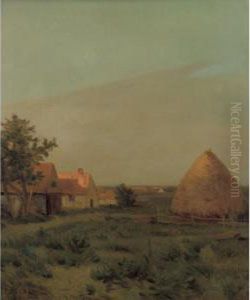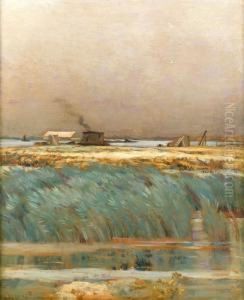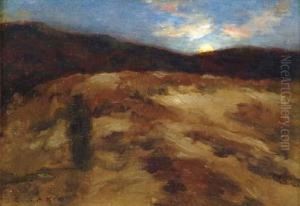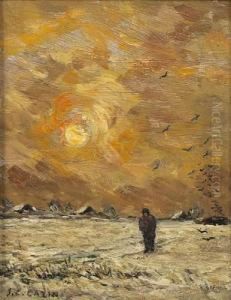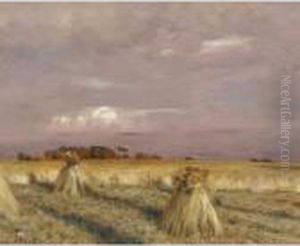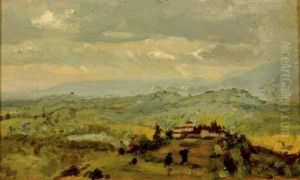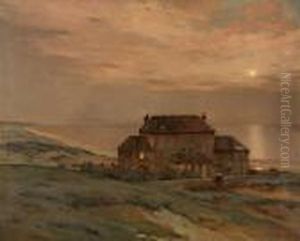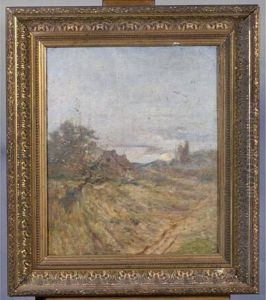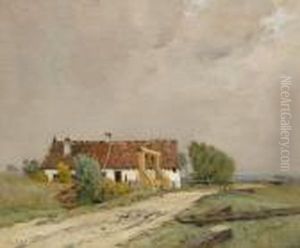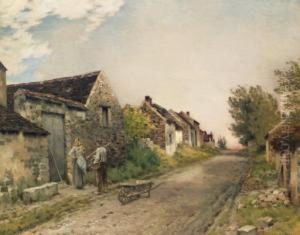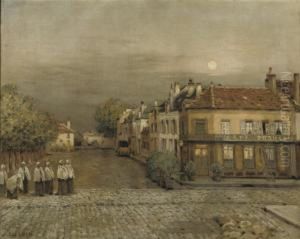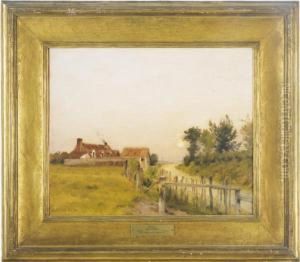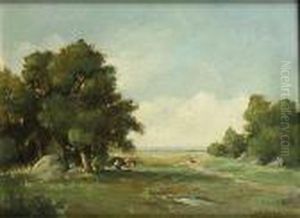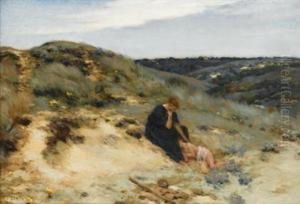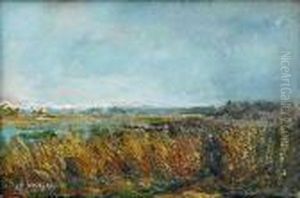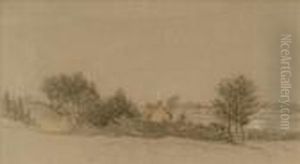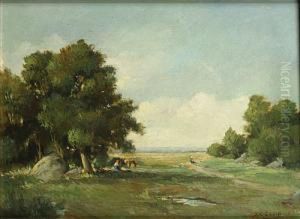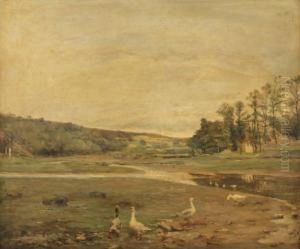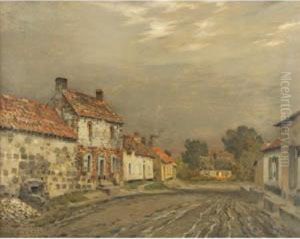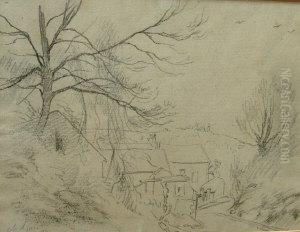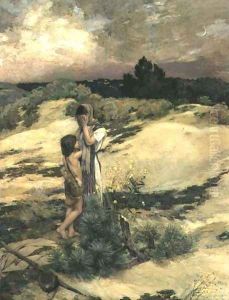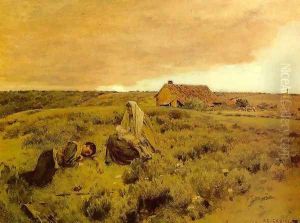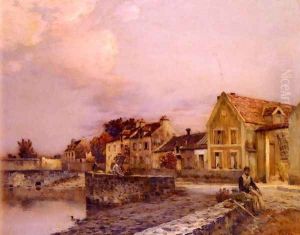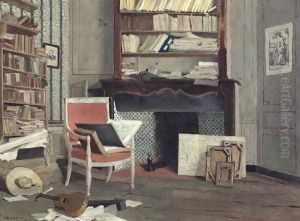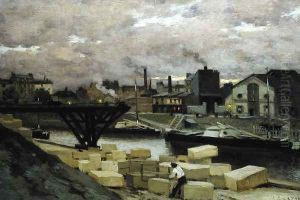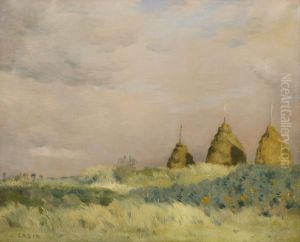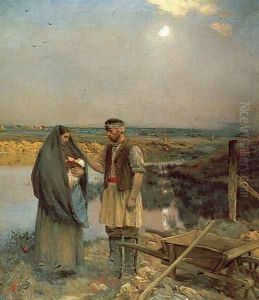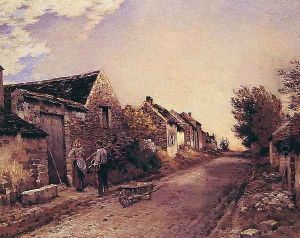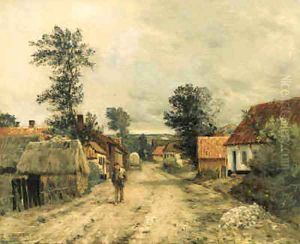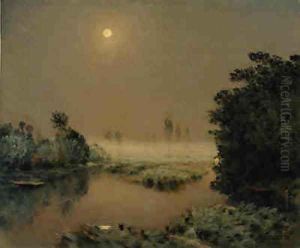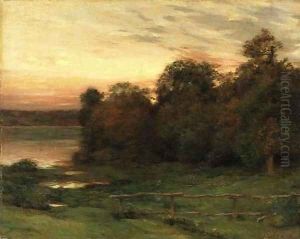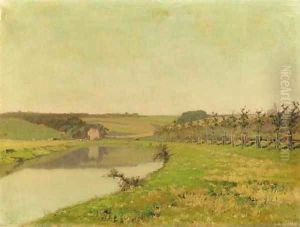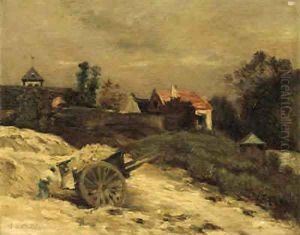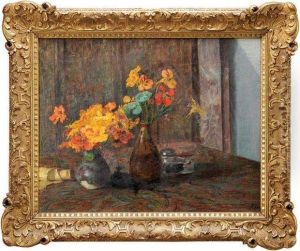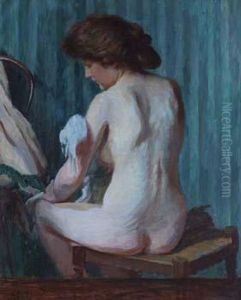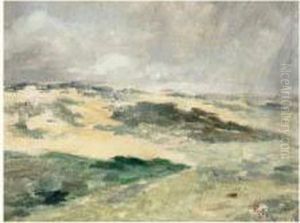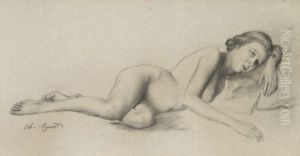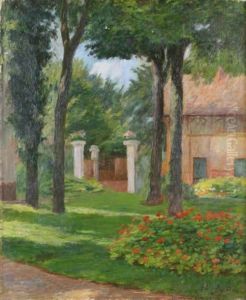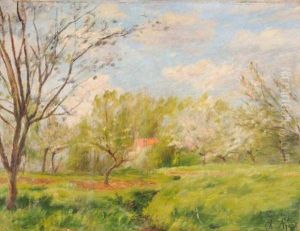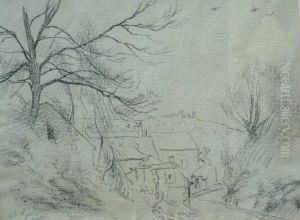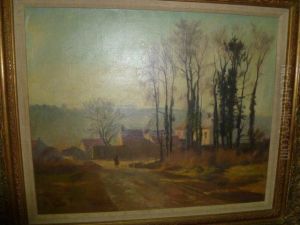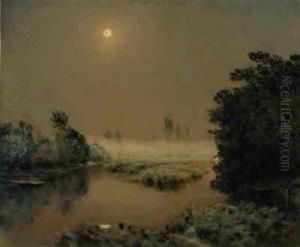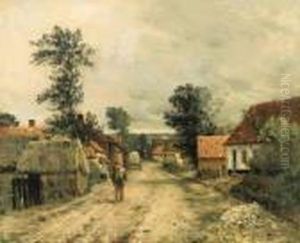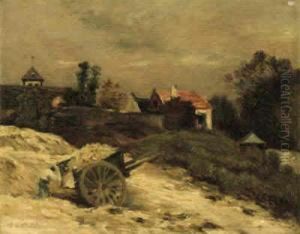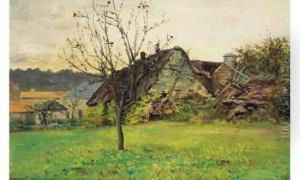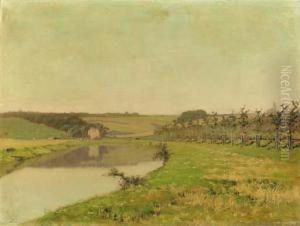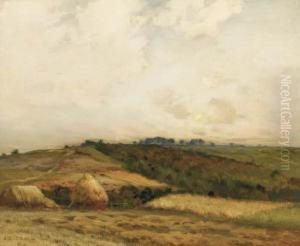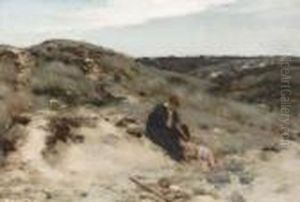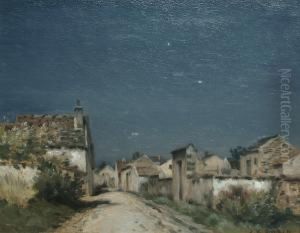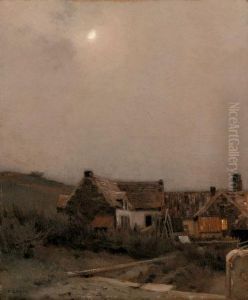Jean-Charles Cazin Paintings
Jean-Charles Cazin was a French landscape painter, ceramicist, and engraver whose work is often associated with the French Realist and Symbolist movements. Born on May 25, 1841, in Samer, Pas-de-Calais, he was the son of a well-known doctor who also had a keen interest in art. Cazin received his initial art education from his father before moving to Paris to study under Lecoq de Boisbaudran, a teacher known for his innovative methods in training visual memory.
Cazin's early work focused on ceramics in the family factory in Samer, but he eventually turned to painting. His travels in Italy, Holland, and England had a significant influence on his artistic development. Cazin's paintings often depicted serene landscapes and rural scenes, characterized by a poetic and emotional atmosphere, which set him apart from the more traditional Realist painters of the time. His use of light and color was particularly innovative and showed the influence of the Impressionists, though he maintained a more subdued palette.
During the Franco-Prussian War, Cazin managed an ambulance service, an experience that had a profound impact on him and was reflected in some of his works. After the war, he lived in England for a few years, where he was influenced by the Pre-Raphaelites and the English landscape tradition. Upon returning to France, he settled in the village of Equihen near Boulogne, where he painted some of his most celebrated works.
Cazin was awarded at the Salons and received recognition from the French government, being named a Chevalier of the Legion of Honor in 1882. He was also a respected art teacher and influenced a number of younger artists. His wife, Marie Cazin, was a ceramist and sculptor, and they often collaborated on artistic projects.
Jean-Charles Cazin's work continued to evolve throughout his career, and he experimented with different styles and themes, including biblical and mythological subjects. He is remembered for his unique contribution to the landscape genre and for his role in the transition from Realism to Symbolism in French art. Cazin died on March 5, 1901, in Lavandou, France, leaving behind a legacy that continues to be appreciated by art historians and collectors alike.
